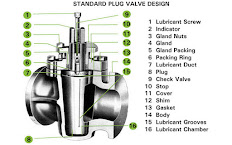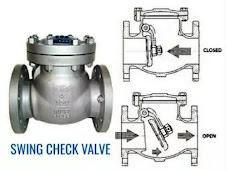Symbol Standarisation P&ID For Industri Standard piping and instrument symbols are detailed diagrammatic documentation that provides a set of forms & standards for documenting P&IDs and PFDs, including standard shapes for instruments, valves, pumps, heat exchangers, mixers, crushers, vessels, compressors, filters, motors and other connection forms. Here are some symbols on P&ID : So, those are some of the symbols that we will often see when reading piping & instrument diagrams. May be useful.
Valve
valve is a device used to regulate, direct or control the flow of fluid in the channel. The fluids in question include gases, liquids, etc.). Sensiri channels in question include pipes, ducting, etc.
Valve Function
Valve functions to stop the flow, reduce the amount of flow, direct the flow, regulate the flow, remove the pressure.
Valve Parts
In general, the parts of a valve are the same, but the difference is the construction in it and the standards used.
Valve Parts (Ball Valve)
Valve Types
1. Gate Valve
2. Globe Valve
3. Ball Valve
4. Plug Valve
5. Diaphragm Valve
6. Butterfly Valve
7. Neddle Valve
8. Check Valve
9. Safety Valve
Maybe that was a brief explanation about the valve, maybe there is still a lot that needs to be discussed for this post, but we will discuss details in the next post.










Comments
Post a Comment